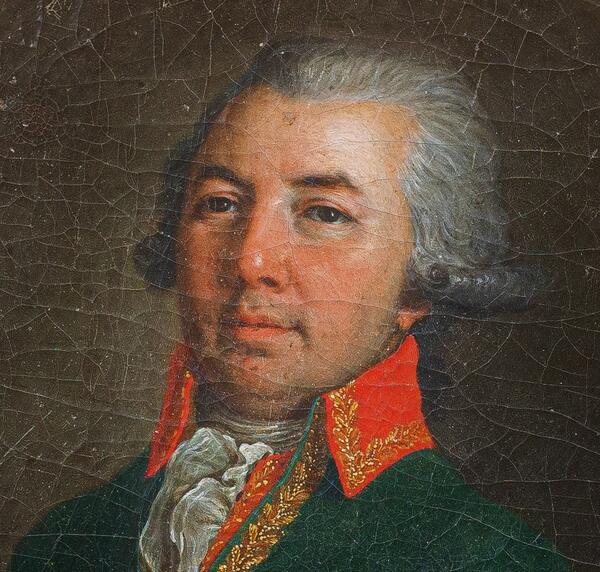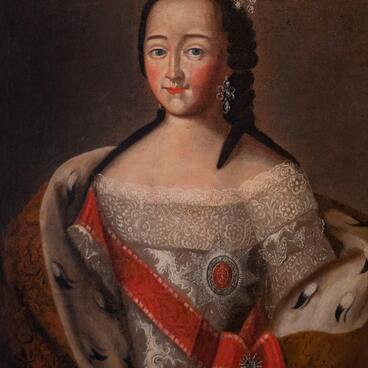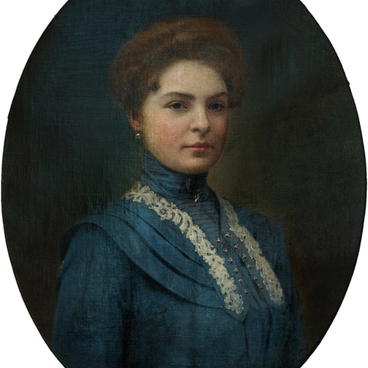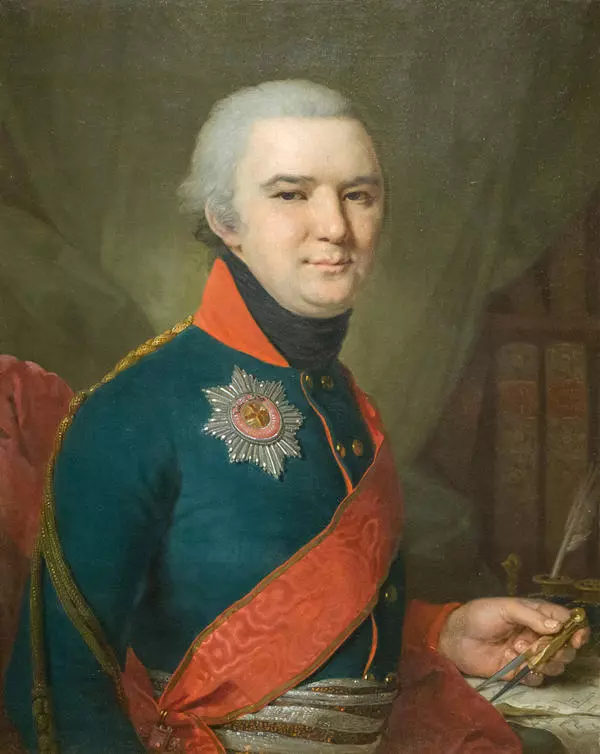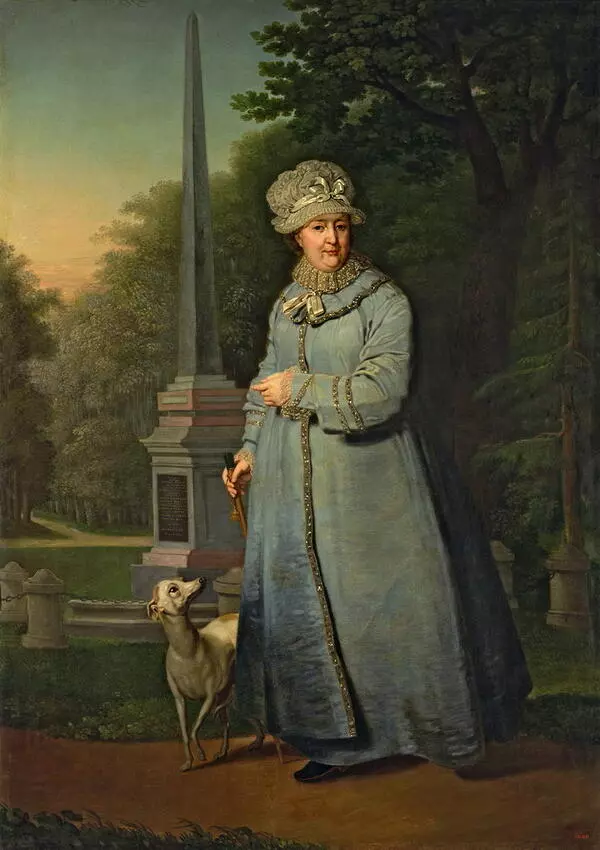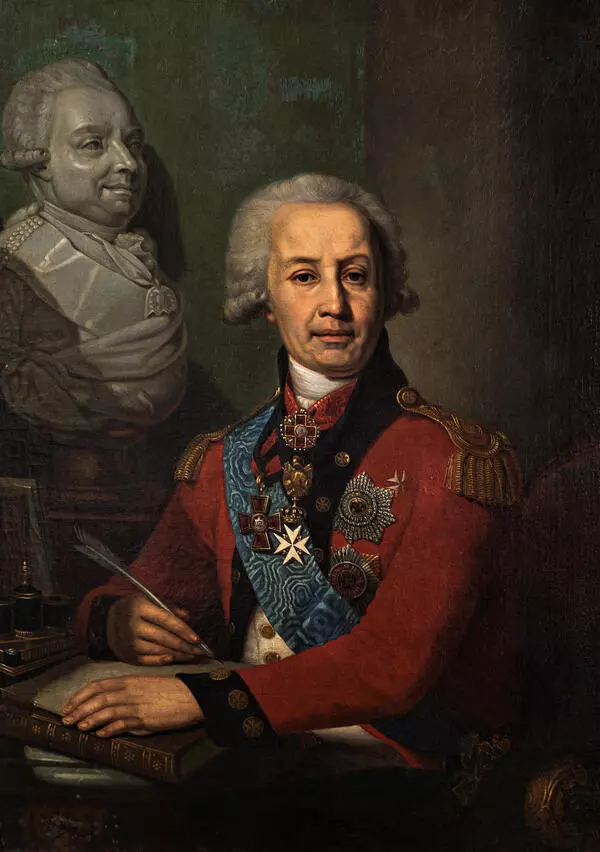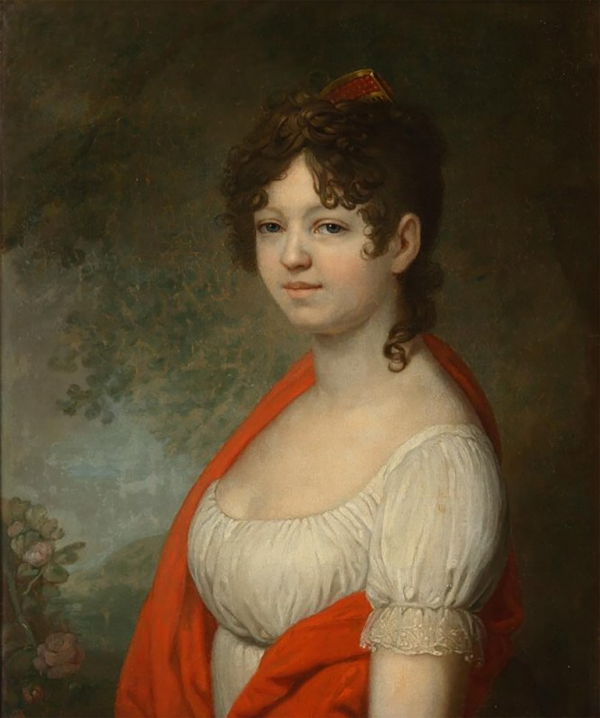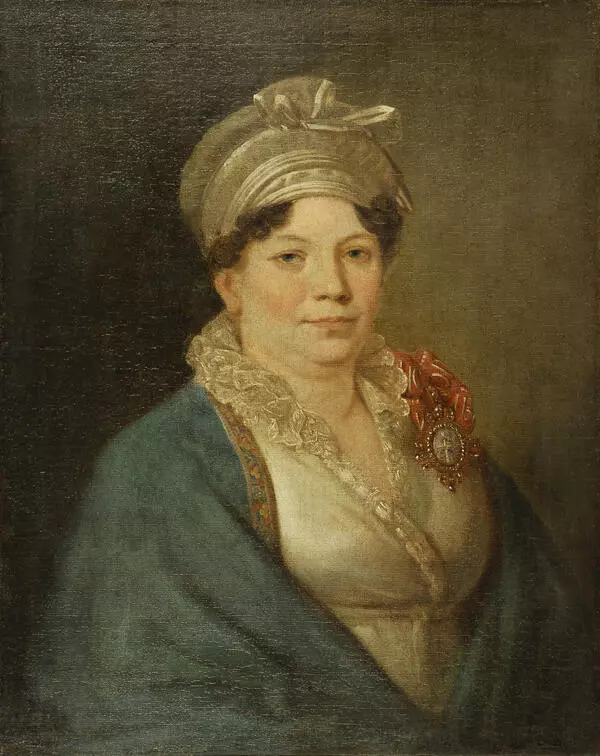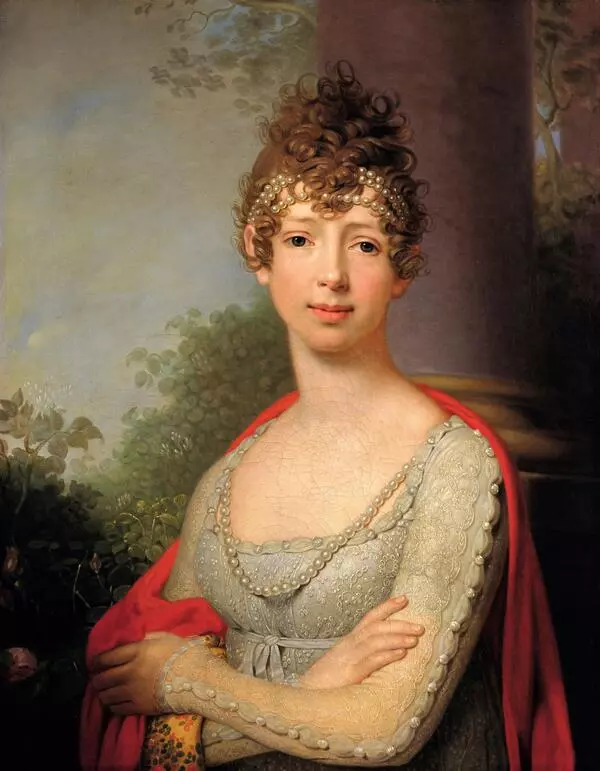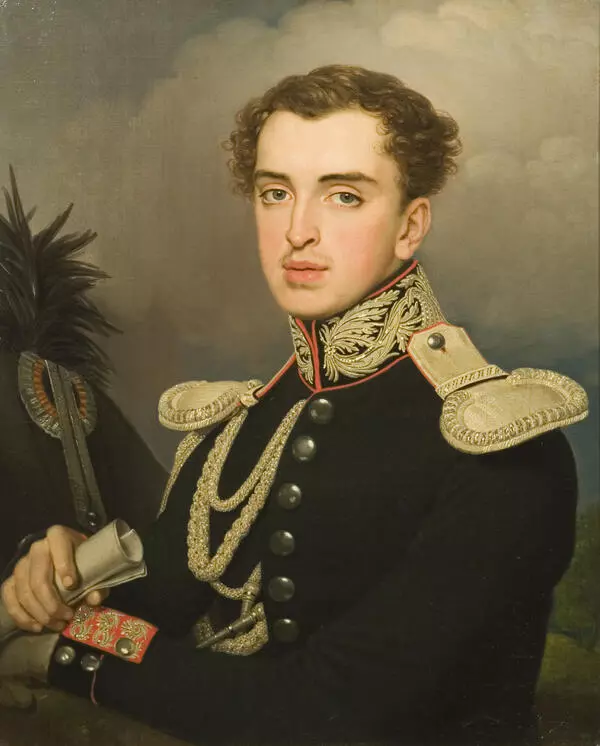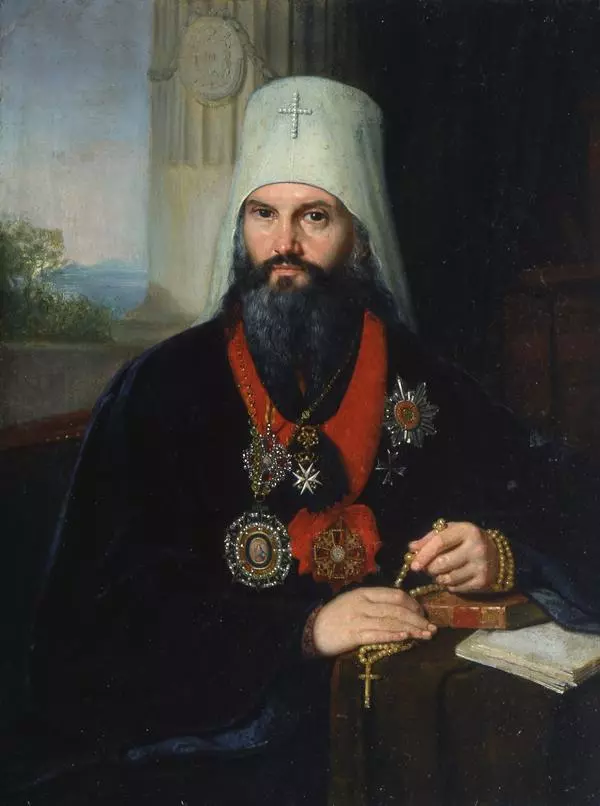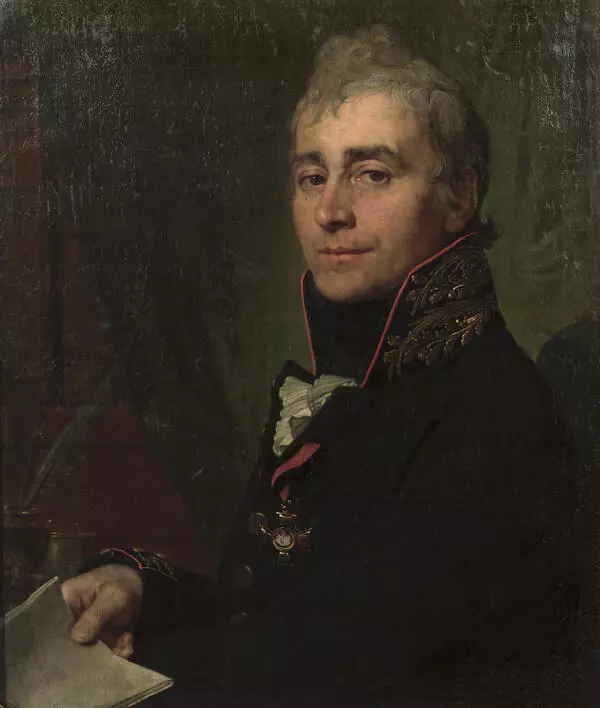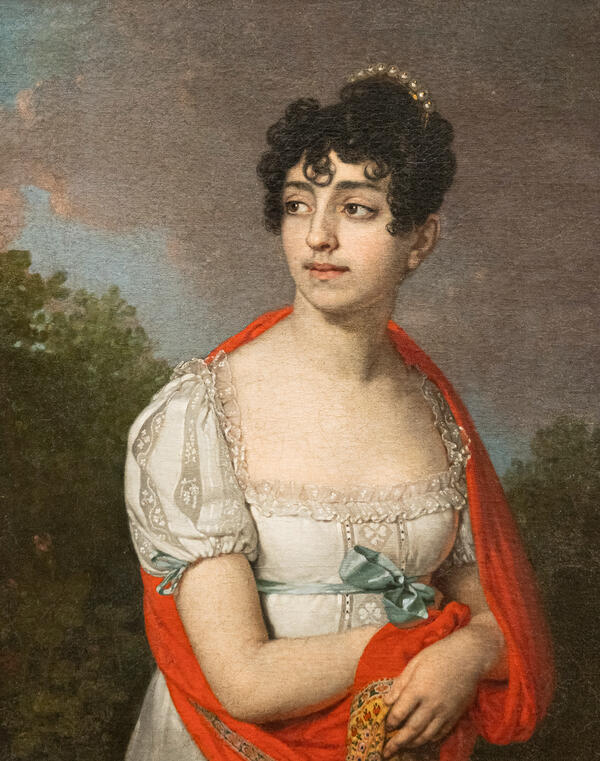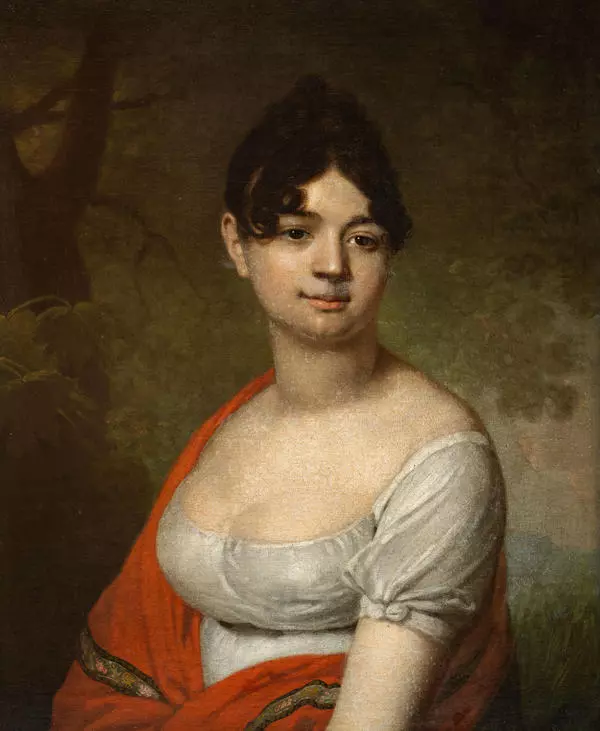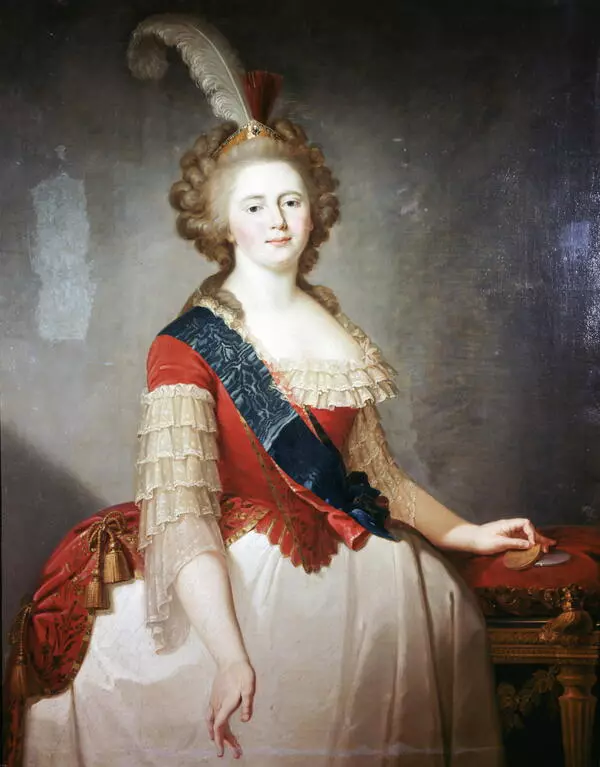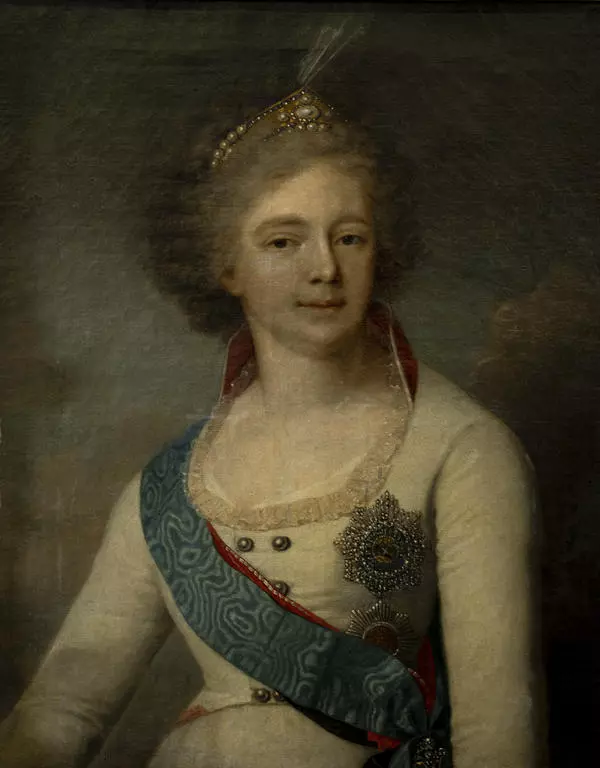Gavriil Derzhavin was born in 1743 in the Kazan province. Throughout his life, there were honorary appointments to high posts, as well as serious quarrels with nobles and sovereigns. He began his service as an ordinary soldier and became one of the largest statesmen in Russia in the 18th century. Derzhavin was the Minister of Justice of the Russian Empire, the governor of two regions, and the personal assistant of Catherine II.
However, Derzhavin would be remembered not as an official, senator or minister, but as a poet. He came to fame after his ode to Empress Catherine II “Felitsa” was published in 1782. In addition, he wrote the first unofficial anthem of Russia, participated in one of the first literary circles of the 18th century, and then created his own one named “Colloquy of Lovers of the Russian Word”.
The portrait of Gavriil Derzhavin was painted by Vladimir Borovikovsky, his acquaintance. The painting belongs to the genre of intimate miniature portraits, which are common in the painter’s artwork.
Borovikovsky portrayed Derzhavin in the 1790s. The artist depicted the poet in the uniform of a Petersburg official, without any regalia. By this time, Borovikovsky had already received the title of academician: he became a popular portrait painter and was even considered a prestigious one. During this period, the artist lived in the house of one of the most prominent representatives of the Russian Enlightenment — Nikolay Lvov. It was there that Borovikovsky met Derzhavin, as well as the poets Vasily Kapnist and Ivan Chemnitser, and the renowned artist Dmitry Levitsky. All of them were members of the literary and artistic society.
This association with prominent representatives of the Russian culture influenced the artist’s views and preferences. For example, the ideas of the philosopher Jean-Jacques Rousseau about the importance of feeling and emotion manifested themselves in the form of sentimental motifs throughout Borovikovsky’s portraits, which would later bring him success.
In addition to the portraits, the artist also turned to religious subjects. Iconostases and icons by Borovikovsky were present in many churches, including the Kazan Cathedral in St. Petersburg.
However, Derzhavin would be remembered not as an official, senator or minister, but as a poet. He came to fame after his ode to Empress Catherine II “Felitsa” was published in 1782. In addition, he wrote the first unofficial anthem of Russia, participated in one of the first literary circles of the 18th century, and then created his own one named “Colloquy of Lovers of the Russian Word”.
The portrait of Gavriil Derzhavin was painted by Vladimir Borovikovsky, his acquaintance. The painting belongs to the genre of intimate miniature portraits, which are common in the painter’s artwork.
Borovikovsky portrayed Derzhavin in the 1790s. The artist depicted the poet in the uniform of a Petersburg official, without any regalia. By this time, Borovikovsky had already received the title of academician: he became a popular portrait painter and was even considered a prestigious one. During this period, the artist lived in the house of one of the most prominent representatives of the Russian Enlightenment — Nikolay Lvov. It was there that Borovikovsky met Derzhavin, as well as the poets Vasily Kapnist and Ivan Chemnitser, and the renowned artist Dmitry Levitsky. All of them were members of the literary and artistic society.
This association with prominent representatives of the Russian culture influenced the artist’s views and preferences. For example, the ideas of the philosopher Jean-Jacques Rousseau about the importance of feeling and emotion manifested themselves in the form of sentimental motifs throughout Borovikovsky’s portraits, which would later bring him success.
In addition to the portraits, the artist also turned to religious subjects. Iconostases and icons by Borovikovsky were present in many churches, including the Kazan Cathedral in St. Petersburg.

